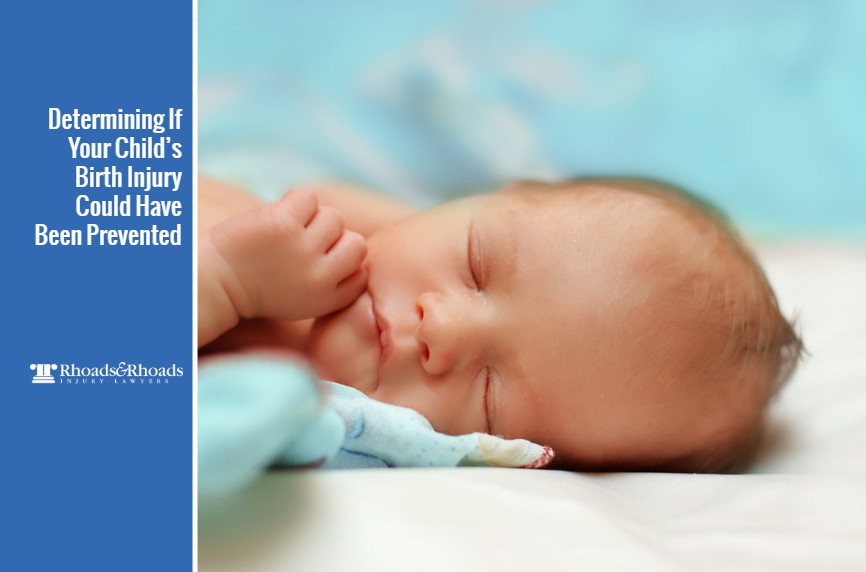
Key Points of This Article:
- Many birth injuries and traumas to newborns are predictable and largely preventable, according to the March of Dimes.
- Obstetricians who are negligent in identifying potential issues before delivery, fail to act swiftly in an emergency, choose to administer dangerous drugs or use delivery tools when not appropriate cause most preventable birth injuries to both moms and babies.
- If an infant was injured, the symptoms should be recognized quickly, and the correct medical support is provided.
- Children who become severely altered due to a labor and delivery mistake will often require a lifetime of costly medical care to treat their permanent and irreversible conditions such as Cerebral Palsy or Erb’s Palsy.
Bluegrass medical providers are no different than practitioners elsewhere and remain responsible for the wellbeing of expectant mothers and their babies. But in Kentucky, adverse maternal and infant health outcomes remain dismal with a D- grade, according to the 2019 Report Card provided by the March of Dimes. The data includes a review of babies who became injured during birth and are now living with chronic pain and physical and developmental disabilities that have left their families burdened by catastrophic financial and emotional drains.
Countless failures to act per the standard of care remains at the heart of a preventable birth injury case and presents in the form of provider negligence or medical malpractice. Common causes and examples of preventable birth injuries and birth traumas in Kentucky can include:
#1 – A medical provider was negligent in failing to monitor the fetus and respond to distress, or diagnose a potential delivery issue.
Example: The fetus did not receive enough oxygen during delivery due to a physician making a poor delivery choice on behalf of the mother, such as failure to perform a timely c-section.
#2 – Improper use of delivery instruments, medical devices and tools.
Example: Although forceps may sometimes be medically necessary, physicians may opt to use this risky tool even when they know a baby’s head is too large for the birth canal and they decided against performing a c-section. The newborn can be born with facial palsy, eye trauma, skull fracture and skull bleeding, as well as seizures.
#3 – Improper use of prescription medications.
Example: A doctor could prescribe a drug not made for, but known to induce childbirth, although it may present risks of uterine rupture, premature birth or sudden infant death.
#4 – Failure to provide oxygen to the baby either prenatally, intrapartum, or postnatally and results in abnormal neurologic function.
Example: The doctor does not act quickly enough after identifying a prolapsed umbilical cord, leaving the cord to be pinched and cutting off the oxygen supply to a baby not yet delivered.
An obstetrician’s negligence can lead to several types of birth injuries that range from mild to severe but can also cause permanent disability. Some birth injuries may even result in a higher chance of an infant or maternal death.
What Are the Most Common Types of Preventable Birth Injuries?
A newborn’s brain, bones or organs can become injured during a difficult delivery but also when a physician or staff chooses to practice haphazardly. The federal Centers for Disease Control and Prevention agrees that many pregnancy-related deaths and childbirth injuries are preventable and present individualized symptoms and complications that could be identified and treated before the risk of trauma exists.
- Cerebral Palsy: Cerebral Palsy stems from an abnormality or disruption in brain development, most often before a child is born. Sometimes the cause of Cerebral Palsy is not known, but preventable maternal infections or a mismanaged labor or delivery may contribute to the child’s diagnosis.
- Erb’s Palsy (and other Brachial Plexus injuries): These are delivery complication injuries that occur when the baby’s shoulders become stuck behind the mother’s pelvic bone during the birthing process. If a doctor allows the baby’s neck to be stretched too far during delivery, the nerves in the neck and shoulder can pull away from the spinal column and can be torn and severely altered. This nerve damage can result in a condition called Erb’s Palsy which creates an irreversible weakening or paralysis affecting the child’s arm movements.
- Birth Asphyxia: If the fetus does not have enough oxygen in their blood, or if blood flow to the brain is restricted, a baby may be born with a serious but treatable birth injury called hypoxic-ischemic encephalopathy. Therapy must begin swiftly within six hours of the time the birth asphyxia occurred.
- Fetal Stroke: A fetal stroke occurs when blood vessels in the baby’s brain become blocked or restricted, possibly caused by birth asphyxia of hypoxia.
- Infections: Known infections can be transmitted from mother to baby during pregnancy or the birthing process, or shortly after birth but can be avoided through the use of antibiotics, a scheduled C-section, or by ensuring that vaginal delivery is not prolonged.
- Bleeding: Cephalohematoma is bleeding that occurs under a cranial bone. Serious cephalohematomas can lead to complications such as jaundice and can be a sign of more unnoticeable but serious birth injuries.
- Fractures (including the skull and clavicle): Preventable fractures can happen when the baby is being pushed too quickly through induction medications or physically pulled through the birth canal with the use of delivery tools. Birth assisting tools such as forceps and vacuum extractors can also cause nerve trauma in the same area of the fracture.
- Hypoxia: Lack of oxygen at birth can cause babies to develop disabilities, such as Cerebral Palsy, autism, attention deficit hyperactivity disorder (ADHD), seizures, behavioral problems, or death.
- Stillbirth: Many stillbirths can be explained medically, but low oxygen supply and high blood sugar are among the major causes of this tragic loss of life.
Other preventable labor and delivery injuries may be caused by a physician miscalculating the size of a baby or scheduling the delivery of a baby too early or too late, mishandling an infant during delivery or in the hospital nursery, or misdiagnosing a health problem such as hyperglycemia, high blood pressure, or infant hypertension. If a baby was injured during childbirth or near after, it is crucial that the symptoms were quickly recognized, and medical support including transfers to other units or advanced clinics were made, and the correct treatments and medications were provided as soon as possible.
Filing a Birth Injury Claim in Kentucky
Kentucky practitioners and health systems like to blame high rates of delivery complications on challenging patients, including moms who have pre-existing medical conditions or lack of prenatal care. But that shouldn’t excuse obstetricians from giving an accurate diagnosis, timely treatment, and safe delivery practices to prevent birth injuries and childbirth-related traumas.
Many of the babies injured during the delivery process will nevertheless require a lifetime of costly medical care to treat their conditions. They should be able to benefit from the most advanced treatments available. An experienced birth injury attorney can help secure that support by investigating in the injury and supporting your claim.
Owensboro Birth Injury Lawyer
With offices in Owensboro and Madisonville, Rhoads & Rhoads represents birth injury victims, including mothers and their babies, throughout Western Kentucky.
Call us at 888-709-9329 to schedule an appointment with one of our attorneys. We offer free initial consultations, and no payment is required to meet with us.
Also read: January is National Birth Defects Prevention Month


